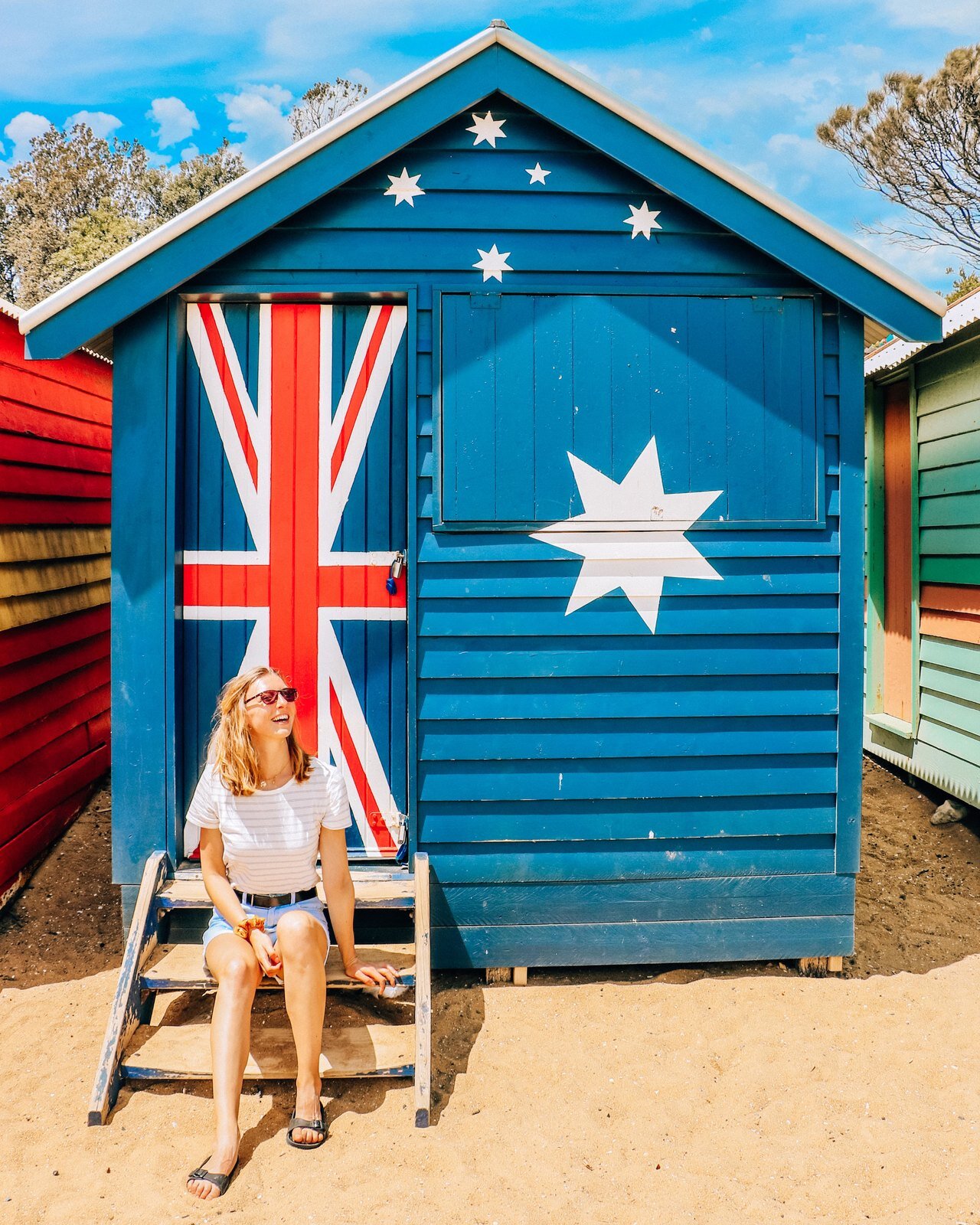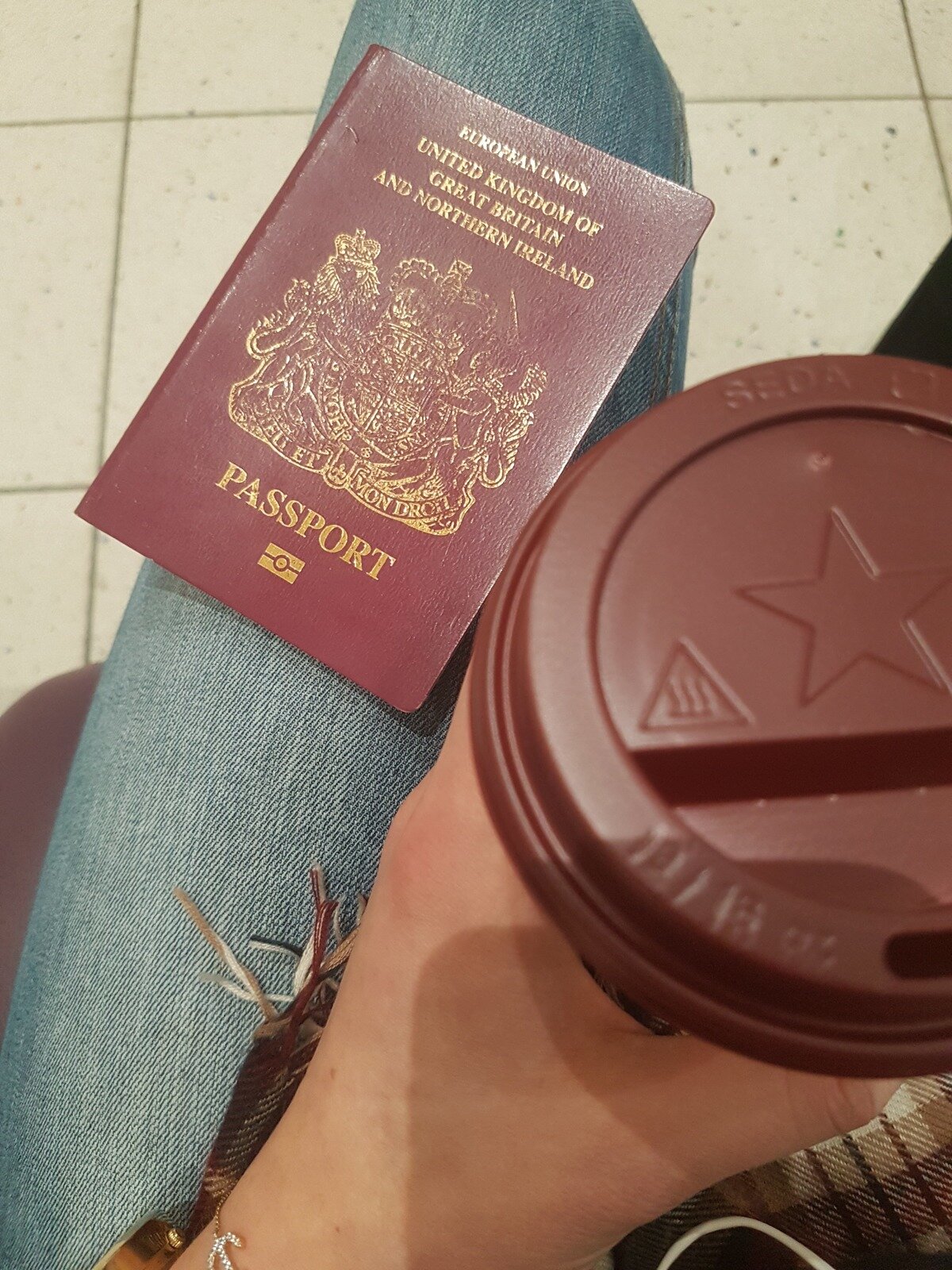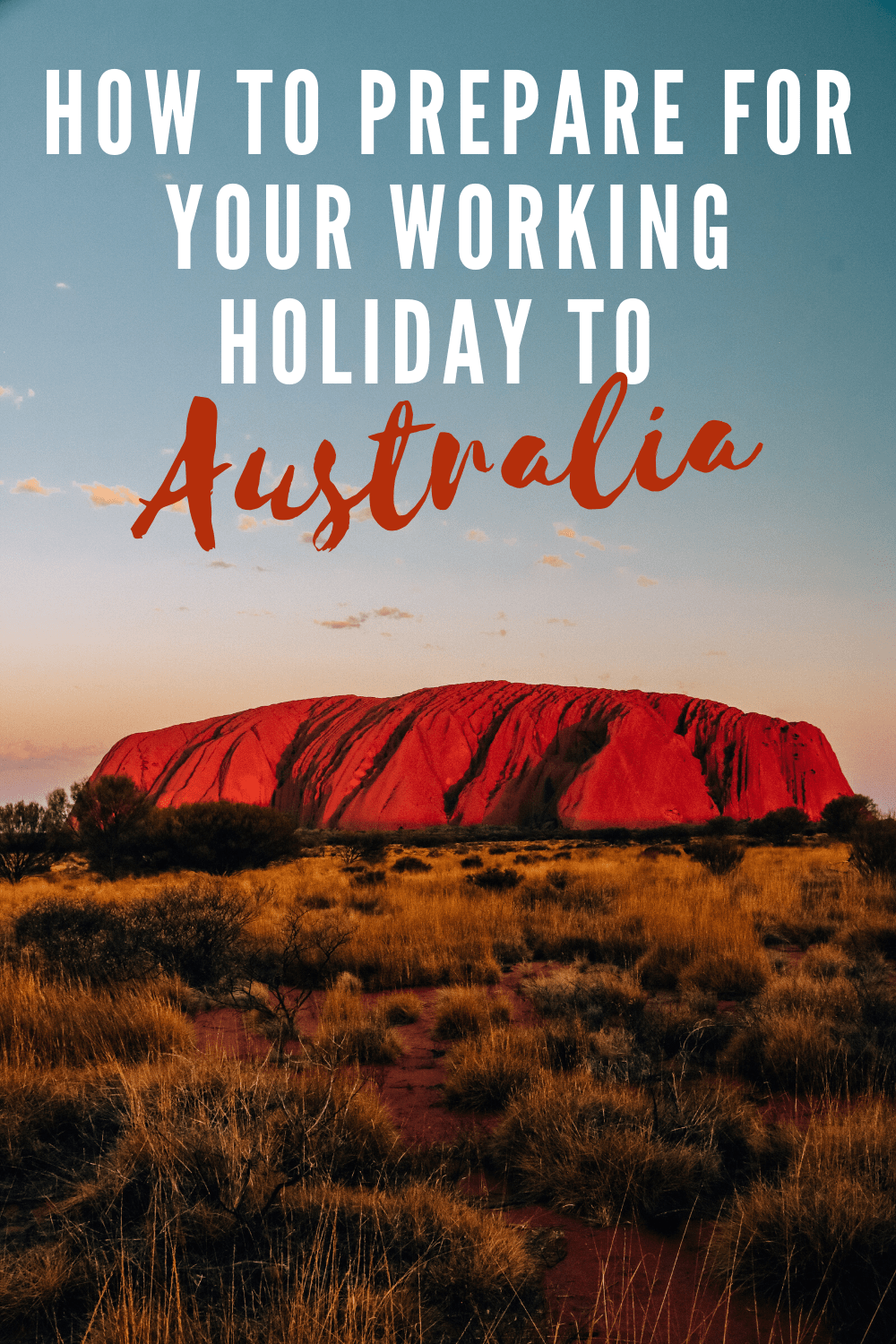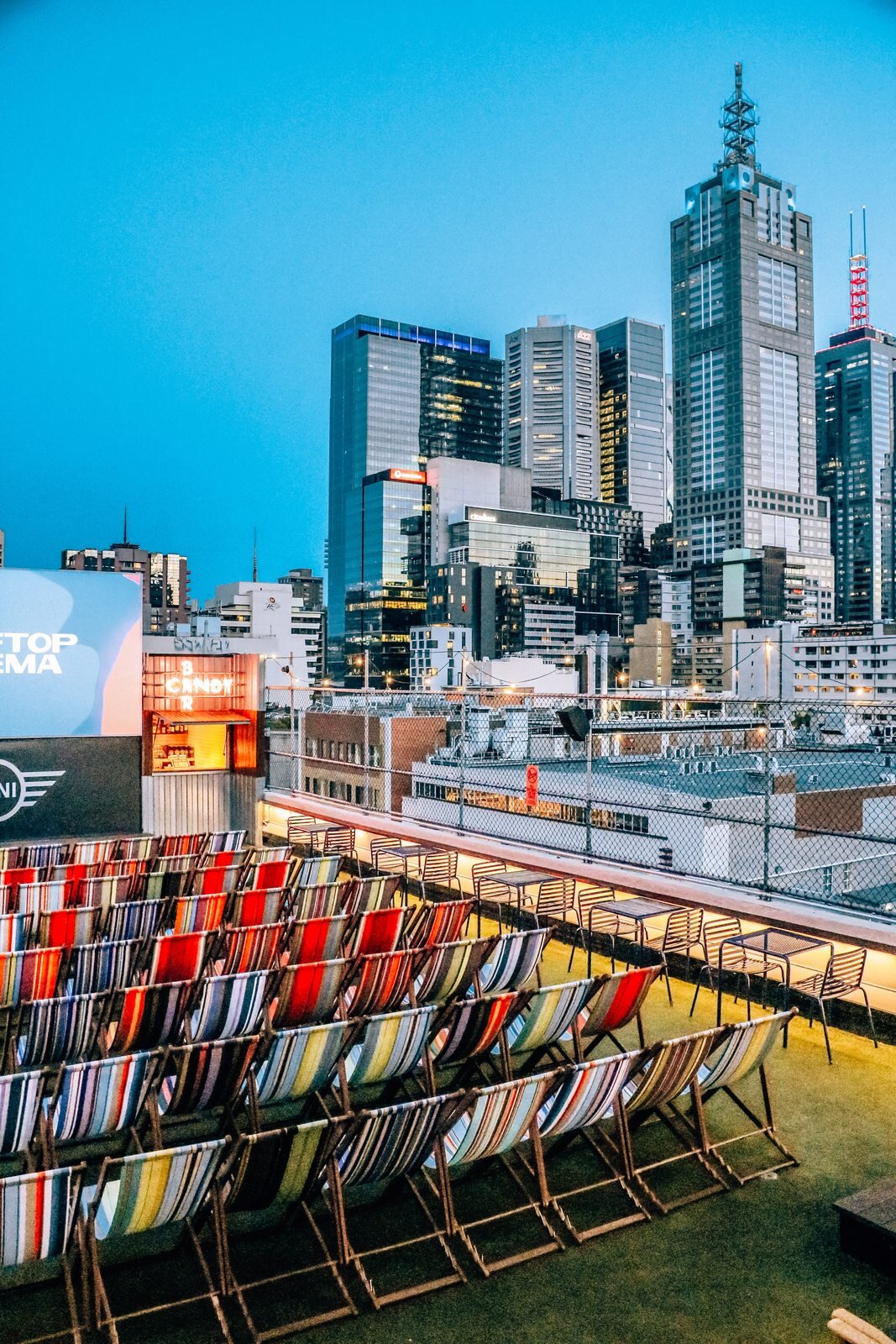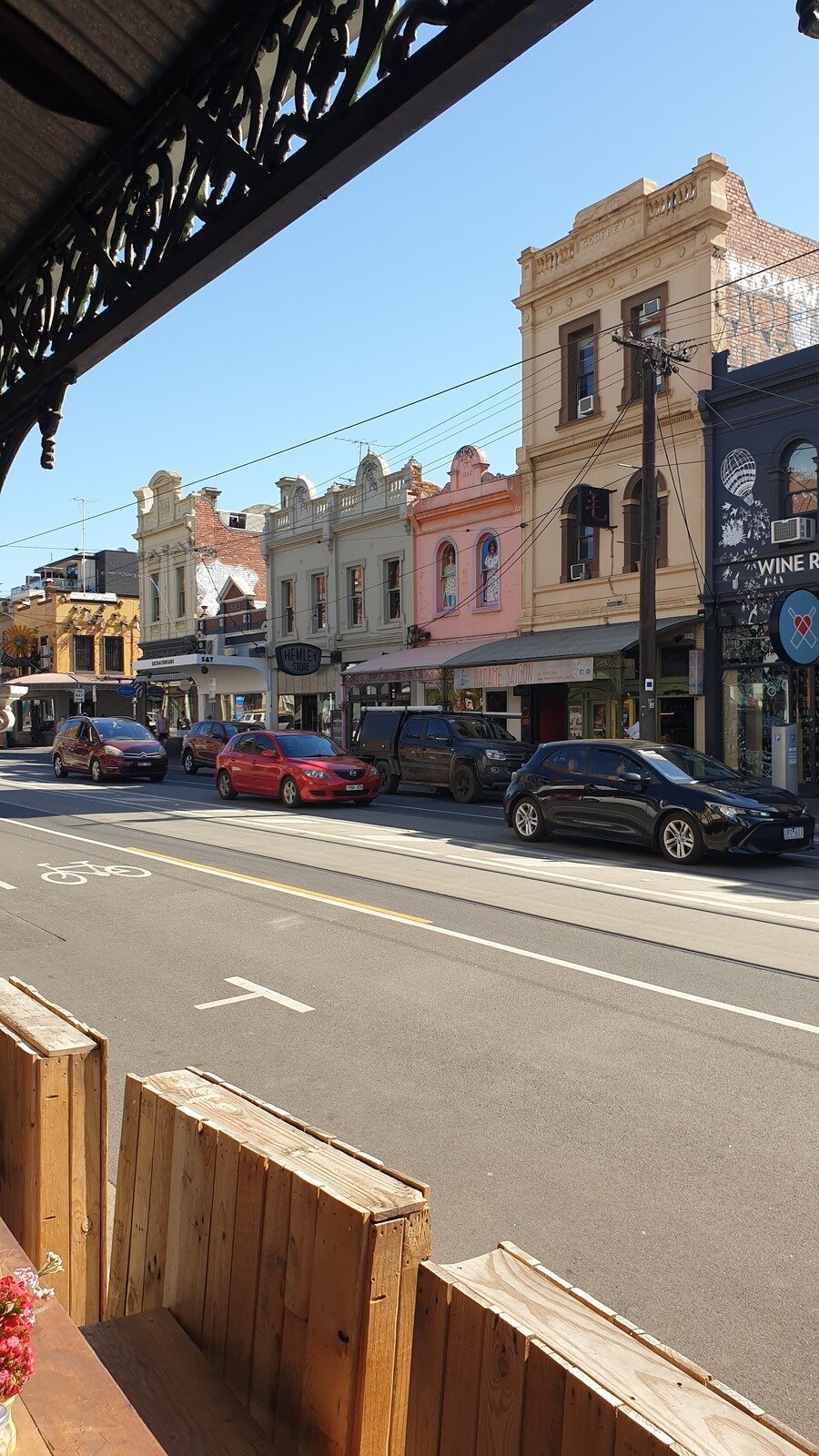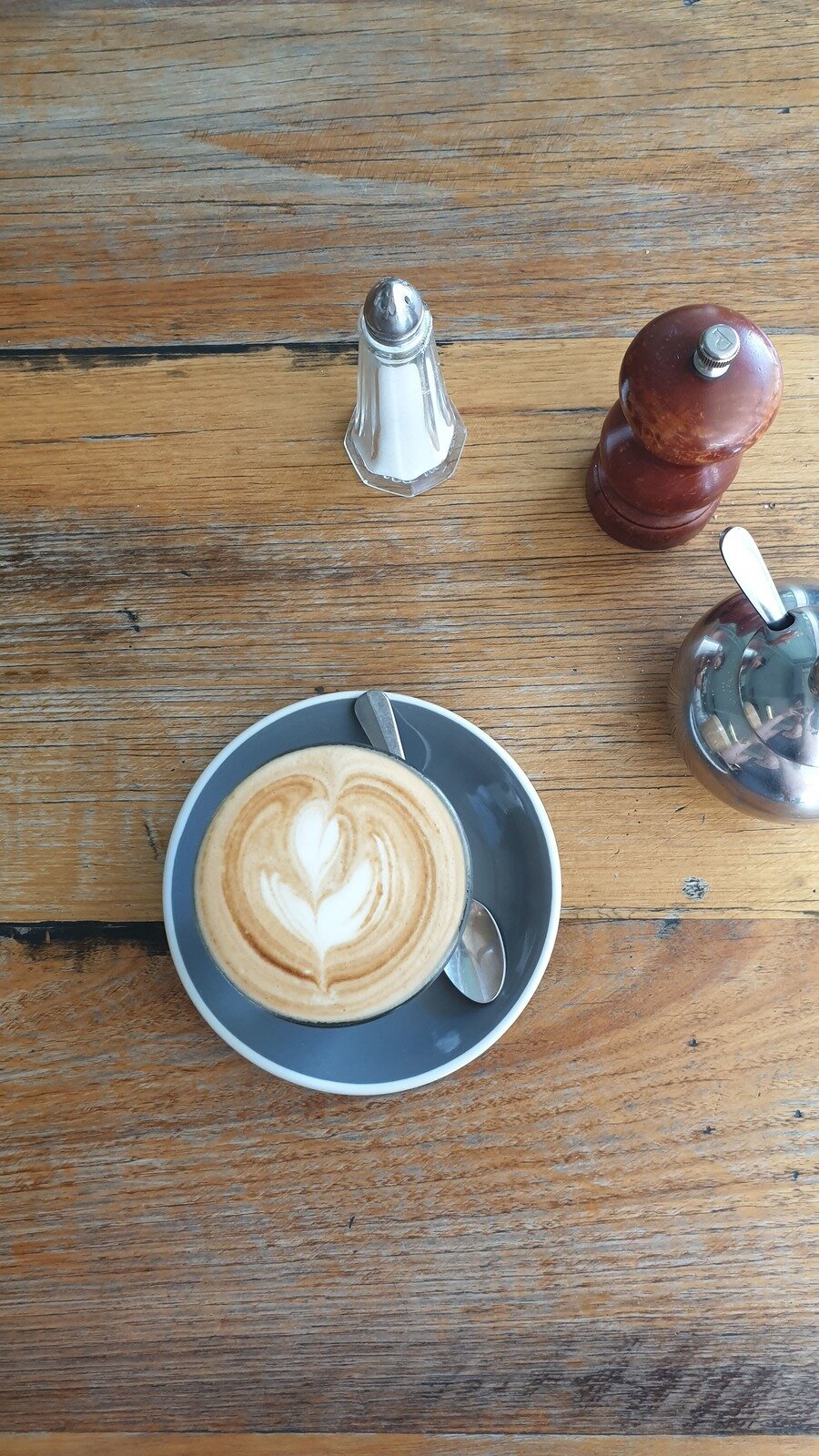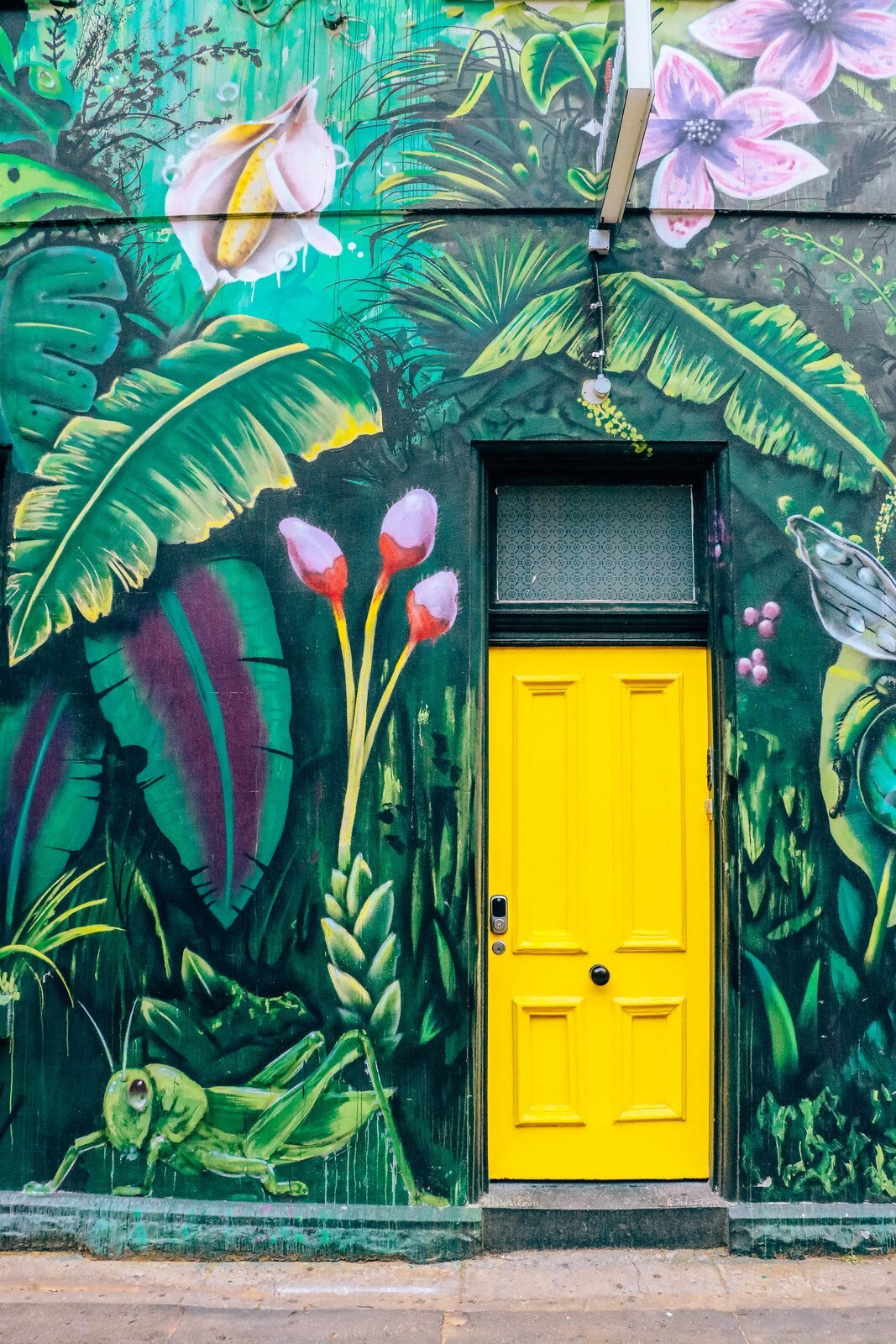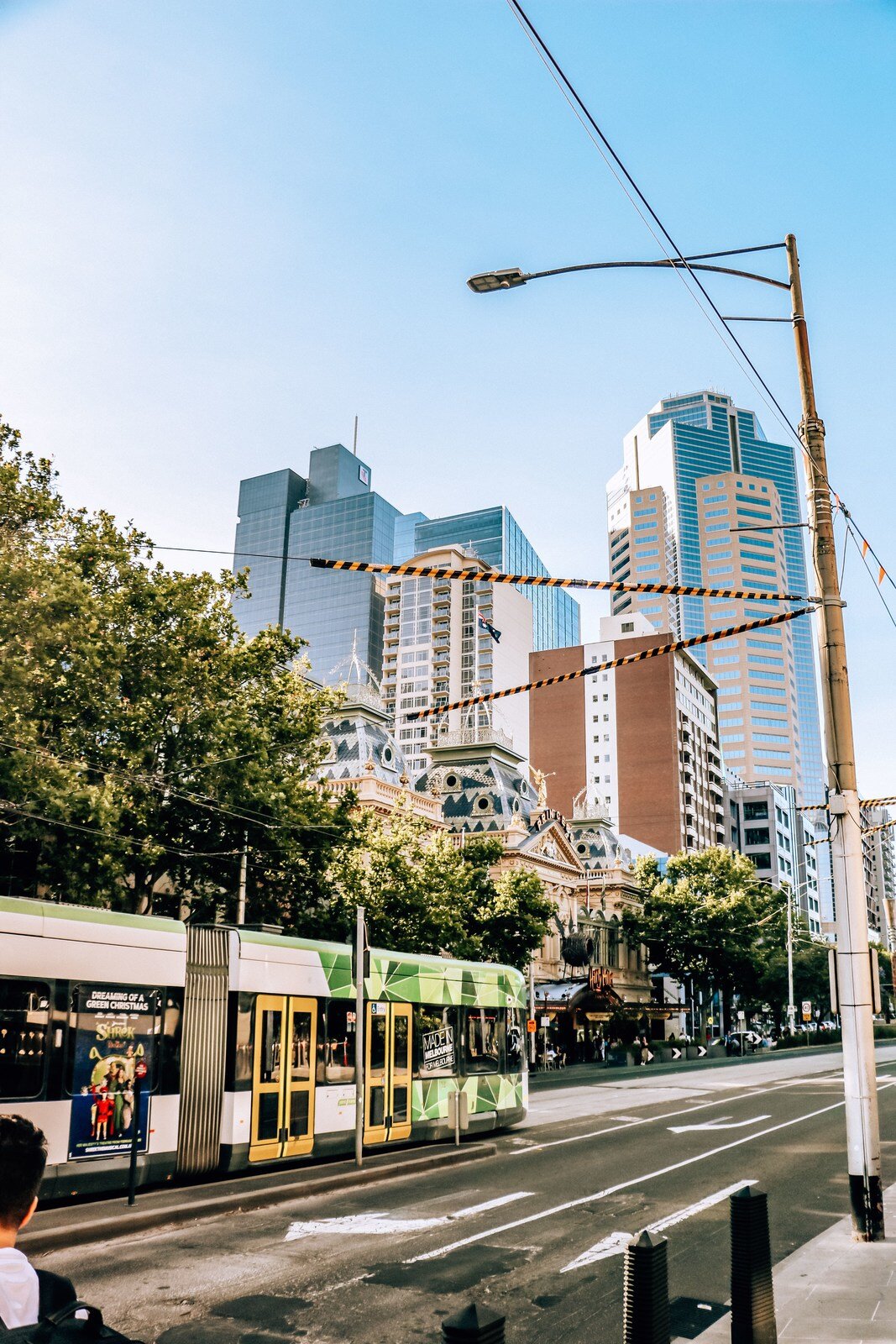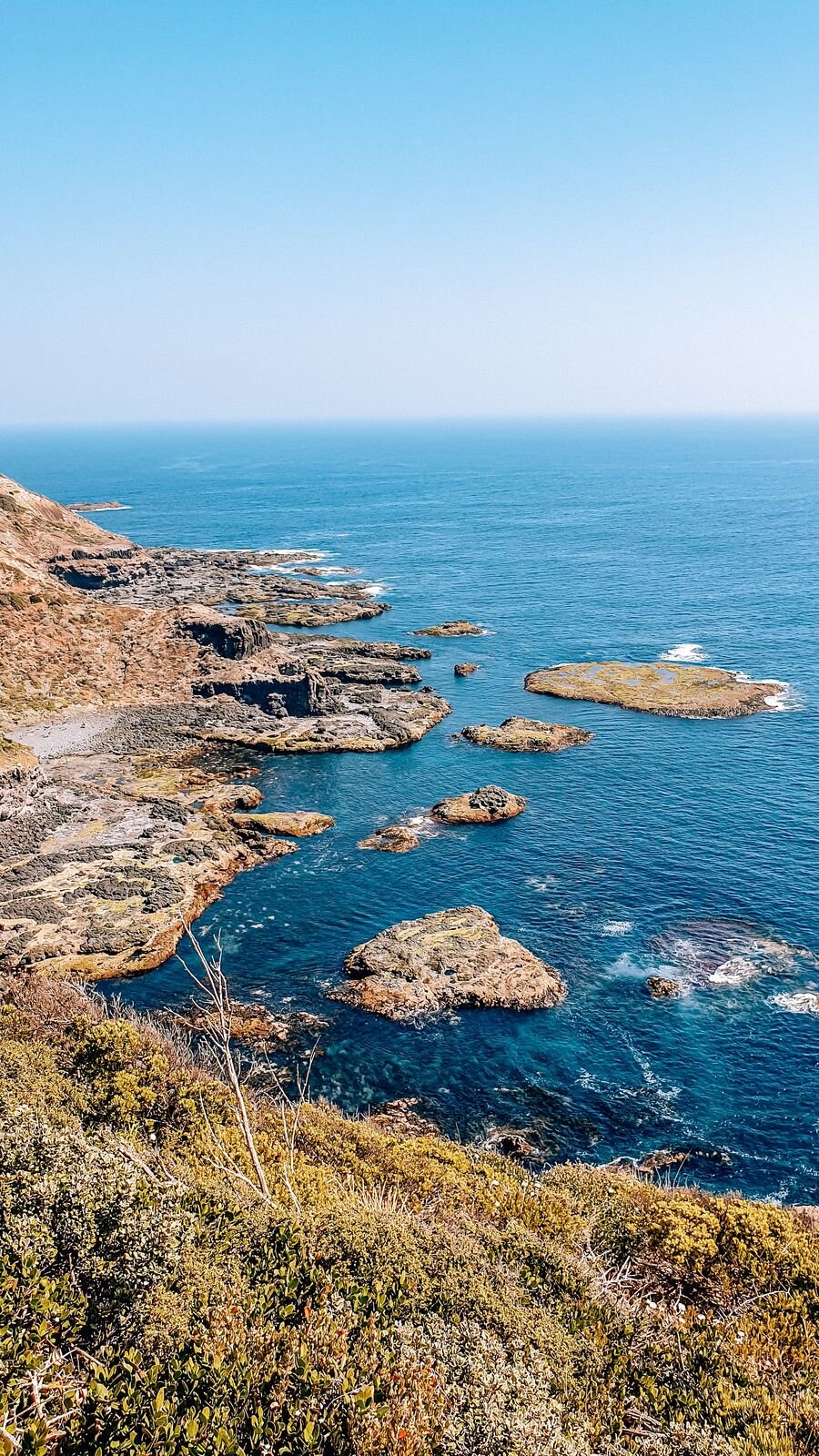So you’re thinking about getting an Australia Working Holiday Visa? First off, congratulations! An Australia Working Holiday Visa experience is a great opportunity to live in a new country and travel, whilst also being able to earn money to fund your travels or onward trip!
This Australia Working Holiday Visa Guide is for everyone specifically planning to enter Australia on a Working Holiday subclass 417 visa, which includes UK citizens, and the Work and Holiday subclass 462 visa, which includes USA citizens. These visas cover all eligible countries and nationalities who can enter Australia on a WHV (Working Holiday Visa), so please read on if you are considering living and working in Australia on one of these visas.
If you are from another nationality not listed for the 417 or 462, please double check the relevant requirements on the Australian Immigration website.
pin now to plan your trip later!
I am from the UK and my partner is from the USA, we were moving to Australia on a working holiday visa in October 2019, so I hope our own Australia working holiday visa experience and advice will be useful to those looking to do the same and give you some tips on how to prepare for a working holiday in Australia.
I struggled to find all the information I was looking for in one place, so this guide should cover everything you need to know, the things I wish I knew before applying for the Australia working holiday visa and the Australia working holiday visa mistakes to avoid!
We were in Australia until October 2020 so I will keep updating this with any new information too.
You might also be interested in:
Where to Live in Melbourne on a Working Holiday Visa
Disclosure: This post may contain affiliate links, which means I may receive a commission if you click a link and purchase something. While clicking these links won't cost you anything, they will help me to keep this site up and running! Check out the full disclosure policy for more details. Thank you so much!
Is Australia accepting working holiday visas?
After the travel uncertainty of the last 2-3 years, Australian borders are now open and Australia is accepting working holiday visas again.
Recent agreements (2023) between Australia and the UK now means that UK citizens can apply for an Australia working holiday visa up to the age of 35.
Australia Working Holiday Visa Guide - contents:
How much does the Working Holiday Visa cost?
Should you use a third-party company to purchase your working holiday visa?
What is the Australia working holiday visa age limit?
Proof of Funds - How much money do you need?
What do you need to show when you arrive at the airport in Australia?
Which Australian city to live in?
What to do when you arrive in Australia?
Finding a working holiday visa job - types of jobs? what are the rules?
How to get a job in a bar, cafe or restaurant on a working holiday visa
Finding somewhere to live - renting in Australia on a working holiday visa
Registering with Medicare - is healthcare free in Australia?
How much money to take for an Australian Working Holiday Visa?
Brighton Beach huts in Melbourne, Australia
The Application process - how to apply for Australian working holiday visa? which Australian working holiday visa to get?
Australian working holiday visa: UK citizens
leaving from London Heathrow airport
UK citizens are eligible to enter Australia on a Working Holiday Visa subclass 417, you can apply for this visa here.
To get a working holiday visa for Australia, you will need to create an ImmiAccount. This is the Australian Government Department of Home Affairs portal where you can upload your evidence documents, pay for your visa and check the status of your application.
The government website advises that 75% of applications are processed in 12 days and 90% are processed in 35 days. Obviously you will need to factor this timescale in to when you expect to travel to australia and when you need to book your flights. DO NOT book your flights before your application is approved.
In my experience, my visa was approved instantly. I submitted my application, closed my browser and an email popped into my inbox 30 seconds later saying: GRANTED.
Most people don’t have any problems with the application process. I really recommend you provide as much evidence as possible, answer all the questions accurately and I’m sure your application will be straight forward too.
Australia working holiday visa: US citizens
US citizens are eligible for the Australia Work and Holiday Visa subclass 462 which you can apply for here.
The government website advises that 75% of applications are processed in 28 days and 90% of applications in 48 days. This is a much longer processing time than the UK visa for a few reasons.
US citizens are required to supply more information for this application such as education level, education certificates and health checks. In our case, the issue my partner ran into was that he had spent more than 3 consecutive months outside of the US in the last 5 years. He was required to supply an in-depth report of dates and countries he visited and then he was requested to go for a health screening. These screenings have to be completed at certified medical offices which are spread across the States. His nearest medical office was in Seattle and he lived in Portland.
Ultimately, if you have not been outside of the States for that amount of time consecutively then this won’t be an issue. However do bear this timescale in mind if you have a specific date you intend to arrive in Australia by.
How much does the Australia Working Holiday Visa cost?
pin now to plan your trip later
For UK citizens
The cost of the Australian Working Holiday Visa subclass 417 costs $485 AUD. This is approximately £260.
For US citizens
The Australia Work and Holiday Visa subclass 462 also costs $485 AUD. This is approximately $335.
Should you use a third-party company to purchase your working holiday visa?
This is a question I’ve been asked a lot and whether I used a third-party company or completed the application myself.
I completed the application myself and I really don’t see a need for you to pay extra money on top of your Australia working holiday visa cost for a third-party company to do it for you.
The visa is not cheap but the process and the ImmiAccount is very straight forward, you do have to gather a lot of documentation together but you would have to do that anyway and supply that to the third-party company, so why pay more for something that’s so easy to do yourself?
It really is personal preference though and if it makes you feel more comfortable in the application process then there are companies such as STA Travel (UK) or BUNAC (US) who will take care of it for you.
Some people say they prefer to use a third-party company because they offer additional benefits like helping you get your Tax File Number (TFN), sending you packs to help you find a job and booking your first few days accommodation in the city when you arrive. Again, these are all easily done by yourself, so decide what works best for you.
What is the Australia Working Holiday Visa age limit?
Port Noarlunga Beach, Adelaide
For most countries, you must be between 18-30 years old to be eligible for these visas. This is still the case for US citizens applying for a working holiday visa in Australia.
However the Australia working holiday visa UK process has recently been updated and the age limit has increased to 35 years old which is in line with the eligibility of Canadians, Irish citizens and French citizens.
It is worth bearing in mind that this age requirement relates to the age you enter Australia at. As long as you enter Australia BEFORE your 31st birthday, it does not matter if you turn 31 while you are there, you still entered the country within the eligible age bracket.
Most people think the cut-off age is 30 but it is inclusive of 30. This essentially means you have an extra year.
Other Australia Working Holiday Visa requirements
Must have an eligible passport
Must not be accompanied by a child/dependent
Must apply from outside Australia
Must not have entered Australia on either visa subclass 417 or 462 previously. (If you are looking to work and live in Australia for a second year, you will need the Second Year Work and Holiday Visa).
Must not have serious criminal convictions. You will have to declare all convictions during your application, these will be considered in the decision of whether to grant your visa.
application page for the visa website
Proof of Funds: Australia working holiday visa - How much money do you need to go to Australia on a working holiday visa?
As part of the application process, you will be required to submit proof of funds. This is essentially the Australian Government checking that you have enough funds to support yourself until you find a job and enough funds to buy a departing plane ticket.
The Working Holiday Visa money requirement for both subclass 417 (UK) and 462 (US) is $5,000 AUD.
This is approximately £2650 GBP or $3500 USD.
To do this you will need to submit bank account statements to show the funds you have available. You can submit more than one document to show this amount across multiple bank accounts, just make sure your name is shown on the statements and that it is as recent as possible, they do allow it to be within the last three months but I think the more recent, the better.
For example, I submitted:
My current account bank statement
My savings account statement
My ISA savings account statement
So even though my current account statement was going to change between me submitting my application and arriving in Australia (due to pay checks back in the UK and booking flights etc), I was able to show multiple fund sources and also my bank statements were very recent (I made sure they were all less than a week old - you can request them on most online banking apps).
What do I need to show when I arrive at the airport in Australia?
I had this question a lot too and the answer is: not a lot. Australia has a reputation for being very strict with people coming in on visas and people bringing in banned or restricted food items or substances. Everyone knows this, so my advice is just don’t risk it. Don’t risk bringing anything on their banned items list, they will put you on the next flight home and there is no refund for visas.
As long as you’re sticking to the rules then you don’t need to show anything. Your visa is attached to your passport number, so when your passport is scanned, that information is already there.
I had all my visa and proof of funds documents ready to show (because I’d read that they were requested), perhaps they are in other airports but I went through automated immigration gates, scanned my passport, went through customs, they did a quick bag check which was randomized; then I was in Australia!
Which Australian city to live in on a working holiday visa?
rooftop cinema in Melbourne, Australia
Unfortunately this is a decision only you can make! But you can make an informed choice when moving to Australia on a working holiday visa.
Do your research, look at information about major cities, think about which state or territory you want to be located in, consider what kind of weather you’re hoping to live in, and what kind of work you might want to do.
Resources:
Read other people’s blogs and articles
Look at websites from Australia Tourism or local city tourist boards
Talk to people! Either people you know who have lived and travelled to those places. Or connect with people online such as on Instagram or forums like Reddit or Tripadvisor
Most Australia working holiday visa jobs are found more easily in cities, such as hospitality, bar work, office work.
Sydney: the world-famous city destination. An expensive place to live but plenty of job and housing opportunities plus well-linked with other cities, areas and internationally.
Melbourne: The edgy, alternative city of Australia. Think craft breweries and brunch spots. Also not a cheap place to live but plenty of opportunities for work and jobs, a temperate climate being in the far south and also voted one of the most liveable cities in the world several years running.
Brisbane: Much smaller city. The fashionable city in Australia and full of beachies. The climate here is sunny and warm all year around.
Perth: Western Australia is quickly becoming popular and while I’ve heard it’s harder to get jobs there, with tourism increasing, so are the hospitality jobs. Check out these Western Australia tips to plan your time there!
If you’re really not sure, fly into one of the major cities, spend a month to 6 weeks there and see how you feel about it. If you want to try somewhere else, then move on to another city and spend some time there. It’s your working holiday, nothing is set in stone so go where you’re most comfortable or just keep moving every couple of months.
I live in Melbourne and absolutely love it - read how I picked where to live in Melbourne. The food and drink scene is amazing, so are the cultural events, festivals and sports scene (the MCG and Australian Open, anyone?) There were plenty of job opportunities and its location in the state of Victoria means there’s plenty to do in the surrounding areas too - you’re closely located to the world-famous Great Ocean Road and Yarra Valley. However, the weather is very changeable and not what you would typically associate with Australia, especially in the winter months!
What to do when you arrive on an Australia Working Holiday Visa?
For most people this is the most daunting bit of the Australia working holiday visa experience, and don’t worry, it’s completely normal to feel overwhelmed, anyone would do when they move to a new city, let alone a new country!
So below are all the questions I had and the hurdles I came up against when moving to Australia on a working holiday visa. Hopefully these answer some of your pressing questions too!
Where to stay in Australia on a working holiday visa?
Brunswick Street, Melbourne
I really recommend staying in a hostel when you first arrive in Australia. This is for several reasons:
Meeting other people
Meeting new people is the quickest way to forget how far from home you are. It’s also a great way to make new friends and learn all the great things to see and do in the area.
In hostels you will meet people in the same boat as you and also people who have been living in a hostel for months. They will all have valuable tips and tricks to help you get settled and figure out your next steps now you’ve actually arrived. Supporting each other is a great way to make friends.
Make connections
I’ve also met people who have met their housemates in hostels or been recommended for jobs though people they meet in hostels, so take advantage of every connection and don’t be afraid to start a conversation.
Use the hostel resources
Backpackers and Working Holiday makers are so common in Australia that a lot of hostels will have resources and information to help you. In my hostel they had a jobs board advertising local jobs in the area, everything from manual trade jobs to hospitality jobs to part-time hostel work. They also had information to help with setting up your TFN and your Medicare Australia working holiday visa requirement.
Also look out for leaflets about things going on in the area, good places to eat or trips to take, it’s a great way to get involved with the area that might be your new home.
Getting an Australian SIM card and phone number
This was the first thing we did after we arrived. You will need an Australian number for your TFN application, for job applications and handing out resumes and for any rental applications.
Prospective employers or rental agencies are more likely to reach out to you when you have a local number as it won’t cost them anything and it suggests you’ll be reliable and staying for a while!
Opening a bank account will also often require an Australian mobile phone number.
The main phone networks are:
Optus
Telstra
Vodafone
Virgin
However I really recommend getting an ALDI Mobile SIM card. I have been astounded by their cheap deals and amazing service. They actually use Telstra’s mobile network so you can be guaranteed good mobile signal and data pretty much everywhere as Telstra is the biggest network in Australia.
On ALDI Mobile I pay $25 AUD (£13 GBP / $17 USD) for 13GB data a month, unlimited calls and texts which includes to 15 international countries (the UK and US are both on this list so we can both call home with no additional charges on our mobile package) and 200 minutes to another 35 countries. All leftover data rolls over on all packages too.
For $35 (£18.50 GBP / $24 USD) you can get 35GB data a month plus the same calls and texts as the package above.
How to open a bank account in Australia
Adelaide at sunset
After getting an Australian phone number, this is the second thing you need to do. Most banks will need an Australian phone number on file.
You need a bank account for when you get a job and if you are intending to rent somewhere. Jobs in Australia will not pay funds into an international bank account and similarly rental agencies will need an Australian bank account to take the deposit and rental payments.
You do need to have a residential address to open an Australian bank account. Most hostels are fine for you to use their address to have post sent to but be sure to double check with the hostel staff first, and make sure to keep checking the post regularly.
Alternatively if you have friends living in the city, you could arrange to have your post sent to them.
The main banks in Australia:
ANZ
NAB
Commonwealth Bank
West Pac
I use Commonwealth Bank and they’re pretty good, their customer service is very efficient. I picked them mainly because they have an incredible mobile app. Other banking apps are quite behind in Australia but the CommBank app gives you real-time updates and notifications every time you spend, you can pause your card if you lose it or cancel it right in the app. It also has some really useful graphics to show your spending habits and incoming and outgoings.
I have their standard current account, called Everyday Smart Access. It has a small $4 monthly fee which is waived if you pay in more than $2000 a month.
Getting your TFN (Tax File Number)
To work in Australia you need a Tax File Number (TFN). For British Citizens, this is the equivalent of your NI number. For Americans it is the equivalent of your Social Security number.
You can only apply for your TFN once you have arrived in Australia and you must have a valid work visa.
Apply for your TFN here.
This is another situation when you will need to supply your hostel, hotel or temporary accommodation address to have your TFN sent to. The government website advises that it can take up to 28 days for you to receive your TFN. I would say this is a significant over-estimation as ours arrived in about 10 days and everyone we spoke to in our hostel got theirs in two weeks or less.
If yours is taking a while to come back to you, you can always call the Tax Office and they may be able to give it to your over the phone is there is a delay in postal confirmation.
Some people underestimate the importance of the TFN. But if you don’t get one to supply to your employer, you will automatically be put on the highest tax bracket - bye bye money.
Important to note:
You are able to apply for a tax return when you’re on a working holiday visa. This is especially important in light of the recent court case where a British backpacker took the Australian Tax Office to court for discrimination based on nationality over the controversial “backpackers tax” and won. However, the Australian Tax Office has appealed the ruling and backpackers will need to wait to hear the outcome of that.
You’ll be surprised by the tax rate Australia working holiday visas come with, but thankfully the pay in Australia is also higher than what we experienced in the UK and the US so we didn’t feel the pinch too much.
Claim back your Superannuation: Australia working holiday visa tip
This is another important note which you don’t need to worry about when you arrive, but when you are ready to leave Australia, you can claim back your Superannuation.
Superannuation or “Super”, is basically the compulsory retirement fund and 9.5% of every person's salary is deducted and paid into their superfund. Since you will be working on a working holiday visa and are not a permanent Australian resident, once you leave Australia, you are eligible to claim this money back.
You can claim back your Super here, this is called a DASP (Departing Australia Superannuation Payment). Although it’s important to note that you will be taxed at 65% on this super withdrawal, so essentially you will only be able to get 35% of the money that’s in your super. This is really frustrating, but on the other hand, it’s money that you didn’t have before!
Finding a working holiday visa job - types of jobs? what are the rules?
The answer to this is going to be very specific to you, your Australia working holiday visa experience, past work experience and what you want to do for work while you’re in Australia.
The most common Australia working holiday visa jobs are:
Hospitality work
Bars, restaurants, cafes
Nanny/Au pair work
Labour or factory work
Farm work
However if you’re like me and your skills are primarily office-based, administrative or clerical, it is also totally possible to get an office job.
The main thing to remember for both subclasses of Working Holiday Visa is that you CANNOT work for the same employer for more than 6 months. Most employers will already know this about working holiday applicants but it’s worth making it clear or reminding them.
UPDATE: As of late-2022, Australia is now allowing WHV holders to work for the same employer for up to 12-months without requesting permission. Please confirm this at the time of application as it’s not clear whether this is a temporary or permanent change.
Casual work, bar or restaurant work, manual work or hospitality work are fairly easy to find short term contracts with. They often rely on the influx of working holiday makers who are looking for working holiday visa jobs in Australia exactly like that. I would recommend looking for a couple of jobs on casual contracts.
Casual contracts, especially in a city, pay very well (often $23+ AUD per hour - $15USD or £13 GBP) and although you are not eligible for sick pay or paid time off, you can turn down shifts and pick your hours as you wish. Obviously don’t be ridiculous and never take any shifts! But Taylor, my partner, has two jobs and he can pick up or turn down shifts at either, depending on what his schedules are looking like that week.
How to get a job on an Australia working holiday visa in a bar, cafe or restaurant
The famous Melbourne coffee
To get one of these jobs in Austalia on a working holiday visa, the best way is to print of your CV and hit the streets. Get out there and hand them out to any establishments which you like the look of. This is how Taylor got both of his jobs.
If you are intending to work somewhere which requires you to serve alcohol, you will need to get your RSA - your Responsible Service of Alcohol qualification. This is mandatory to service alcohol. You can get this by doing an online course in all States except Victoria, where it has to be completed in a one day class in person. The cost is $55.
Tips:
You can print copies of your CV for cheap at Officeworks. Officeworks are all over Australia and you can buy and load money on a card and print off plenty of copies of your CV for very cheap. Your hostel might also have a printing service.
Make sure your CV is tailored to the jobs you’re hoping to apply for.
Research the area you’re hoping to settle in, familiarise yourself with the bar, cafe and restaurant scene.
Get your RSA qualification before applying to places that serve alcohol so you can put this on your CV. This not only shows that you're proactive but since you'll be required to do it anyway before you start working, it'll make getting started so much quicker if you have it before.
Spend a few hours each day handing out your CV, starting from your ideal location and working outwards from there.
Make sure to speak to a member of staff or the manager if available. Ask if they have any jobs available and whether you can leave your CV.
MAKE SURE YOUR AUSTRALIAN PHONE NUMBER IS ON YOUR CV. Otherwise they will not contact you.
If you get chatting to the staff in these places, even if they don’t have anything right now, they might still take your CV, or recommend other places for you to try.
Check the jobs board in your hostel or chat to your hostel staff - they might even have an opening there!
You can check on seek.com.au - the biggest online jobs board in Australia. Some companies do advertise these types of jobs here but it definitely wasn’t as quick or effective as going into places in person. However using Seek was a good way to learn about more companies in the area which you can research and pay a visit to with your CV.
How to get an office job on an Australia working holiday visa
Melbourne CBD view with tram
If you are looking for an office job on a working holiday visa, I will say right now that it is harder to get one of these jobs compared to getting work in hospitality, simply because most companies based in offices are looking for longer term employees. Even for admin roles most companies want an applicant who can commit to at least 12-18 months. Obviously you legally cannot do this on a working holiday visa.
It’s also worth noting that you will probably be applying mostly for administrative, assistant and clerical roles. Anything more skilled/higher up the office food chain will again not be favourable for you as you can only work 6 months with them. Companies spend lots of money hiring and training new people, they are unfortunately reluctant to do that for someone they know can only work for 6 months.
What I suggest is looking for contract roles. Some offices will be looking for people to cover a role or project for a few months at a time, which in your case, suits both you and them perfectly - make sure you emphasize this convenience to them!
It wasn’t easy, I applied to about 50 generic administrative jobs over a 6 week period before finally landing a 6 month contract with a company. But for 6 months of stability, it was worth it!
I primarily used Seek for all my job applications. Seek is the biggest online jobs board in Australia. You can filter the results by city, salary and most importantly, contract/fixed term roles.
You might want to try recruitment companies too as they are also used to looking after working holiday visa applicants and companies will use them to find employees to fill those short term roles you want to be looking for.
I personally didn’t find recruitment agencies very helpful, their processes were long and half the time I never heard back and had more success applying for roles myself. But I have spoken to other people who had great success with recruitment agencies so it’s worth a try as another option.
Also it’s worth noting that often temp roles will pay better because they are temp and you don’t get the benefits of sick pay or paid leave.
Recruitment Agencies in Australia (most major cities)
Hudson
Hays
Randstad
Page Personnel
Wells Gray
Charterhouse
Office Team
Tips:
Tailor your CV. Just like you would with any office job, you still need to tailor your application to the job description.
Look for contract roles with the earliest start date so you know the process will be quicker
Rather than contacting recruitment agencies on their generic application address, go onto Seek and find the recruitment company’s job listings on there. Often there is a personal email address for the consultant. Send your CV and covering letter directly to that consultant and you’re more likely to get a response.
Follow up repeatedly. I found people were really bad at getting back to me. Don’t be afraid to follow up if you’ve heard nothing.
It is still worth keeping an eye out for local businesses and offices in your suburb who might be looking for admin or part-time staff so walk around with CVs too and check windows for job adverts.
Make sure your references are ready to receive reference requests from your new job. Some of the reference and background checks I had were very extensive so make sure your references back home are expecting them!
Australia WHV Job Search resources:
Facebook groups: Look for jobs boards in your area e.g. Backpacker jobs in Melbourne, Backpacker Job Board, Backpacker Jobs in Australia, Jobs in Melbourne, Jobs in Sydney, Melbourne Jobs
Hostel jobs boards
Finding somewhere to live - renting in Australia on a working holiday visa
Victorian Houses in Melbourne
As well as finding a job, deciding to stay somewhere longer term and rent a place is also a big decision and one you should research beforehand.
If you are planning to stay in a major city for 3+ months then I would recommend finding somewhere to rent. If you’re staying for less than 3 months you might be able to negotiate long-term rates with your hostel or an AirBnB host.
I recommend planning this roughly from the start. Obviously you might not know you want to stay somewhere long term until you arrive and realise you love it, but it pays off to make this decision early on as Australia is not cheap and renting is definitely cheaper than paying for long term accommodation.
Firstly, do your research on what suburb to live in. Australian cities are split into suburbs and all of them have their own characteristics and vibe. Talk to people before you arrive to get recommendations if they’ve lived in the city before. Look at blog posts from people who live in those cities and try to get an understanding of the different areas.
Secondly, I would really recommend staying in a hostel in different suburbs. We stayed for a week in 3 different suburbs so we would get a feel for them and the surrounding area. This is definitely how we made our final decision.
Thirdly, know your budget but be flexible. Australia is expensive and the housing market is competitive and fast moving. We originally thought we would get a room in a shared house for $250 a week. What we didn’t realise is that price was pretty much single occupancy only, not a realistic couples’ budget (they charge at least $50 for a couple in a room than a single). Also $250 rooms were bleak and the houses we look at which were that cheap were super dodgy!
It’s not impossible to get a room in a shared house for that price, but if you are staying for a few months, just consider that you probably want to be coming home to a clean, safe and well-looked after environment, it’s worth paying more for that!
House Search Resources:
Flatmates.com.au - this is where we found our house share
Gumtree.com.au (but be careful, this is not regulated)
RealEstate.com (pricey but better if you’re looking for your own place)
Facebook pages: again look for local ones in your area. We used Housemate Search and Fairy Floss Real Estate
Tips:
Upgrade and pay $25 for the flatmates.com.au early bird plan. This means you can contact listings which are newer than 14 days before people on the standard plan, and means you get ahead of the crowd to get in contact and arrange viewings. Most decent places are gone in less than 14 days so don’t miss out.
Really personalise your profile on these websites. Flatmates and Flatmatefinders both have the option to personalise your profile. Give as much detail as possible and have a photo. For people searching for their own housemate (rather than an agency), they want to know the kind of person who might move in, you need to make sure you appeal to them!
You will get spam messages, just ignore them if they’re not relevant!
Have an application letter handy. This is helpful to many WHV people, especially when applying through an agency. Some agencies don’t like if you don’t have a rental history in Australia. This application letter should be personal and informative about your previous rental history, include any references from rental agencies at home or even just previous housemates (not necessary but useful). You’ll find more info on this here.
Write a list of questions to ask at each property. E.g. What are the bills cost? What do the other housemates do for work? What is the deposit and when/what frequency is rent paid? Furnished or unfurnished? Parking or garden requirements? Public transport links? Local area vibe?
I would not recommend moving in without meeting all the housemates. We looked at several properties which had up to 6 housemates and we didn’t meet any of them at the viewing. For us that was too big a risk to take!
Deposits are usually 4-6 weeks rent and sometimes +first week rent. Make sure you have the funds to support this otherwise no one will sign you.
Make sure you know how long the contract is for. Some properties are looking for long term tenants only (6 months+) so if you’re not planning on being in the area that long, establish that from the start. Otherwise you could get hefty cancellation fees.
Read through the contract fully and take photos of the state of the property when you move in.
Don't get too hung up on finding somewhere furnished. We were only searching for furnished places at first but they're actually not that common in Australia. Most are partly furnished or unfurnished. We eventually found the perfect place but it was unfurnished. We furnished it sparsely with stuff we bought for cheap from Op Shops/charity shops, Facebook Marketplace and IKEA.
Registering with Medicare - is healthcare free in Australia?
Medicare is Australia's healthcare service and there is a common misconception that it's free. It is not. But it is fairly well subsidised for common medical requirements and procedures.
Think of Medicare as somewhere between the UK and the US provision. It's not completely free like the NHS but you won't be acquiring huge bills like in the US.
However not every country is eligible for Medicare subsidised healthcare. You are only eligible if your country has a reciprocal healthcare agreement with Australia. These countries are:
United Kingdom
Belgium
Finland
Italy
Malta
Netherlands
New Zealand
Norway
Republic of Ireland
Slovenia
Sweden
So good news for UK citizens but unfortunately not for US citizens. Healthcare is still available to other citizens of course but you will have to pay in full. Which is why having travel insurance is SO IMPORTANT.
Even for UK citizens and citizens from the listed countries above, I still recommend you take out travel insurance because Medicare only works on a partially subsidised system. The more common the issue, the more likely it will be subsidised.
For example, with Medicare, a GP appointment in Australia can be entirely free if you go to a bulk billing practice, or you might have to partially pay at other (often better standard practices), in which case a GP appointment might cost you $35 (£18/$25 USD).
Second example, if you have an accident and require an ambulance, an ambulance costs $1,100 even if you have Medicare. You will need your travel insurance to help cover this.
Find out more about Medicare here.
I highly recommend taking out health insurance, Australia working holiday visa experiences can be covered by Safety Wing insurance.
Getting around the city when you arrive
Trams in Melbourne city centre
If you've decided to settle in a city for a while, be sure to find out about their public transport options as early as possible as it might be cheaper for you to purchase a pass or monthly ticket of some sort.
In Melbourne, they have a transit pass which can be used all over the region called Myki. We wasted a lot of money paying for the transit with Myki Money rather than buying a monthly Myki Pass which costs about ⅓ less.
In Sydney they don't have a specific pass, you can use your contactless bank cards for payment on public transport. But there are some preferential rates in certain cases if you buy an Opal Card, so be sure to check the NSW transport authority website.
How much money to take for an Australian Working Holiday Visa?
Victoria, Australia
You will have submitted your Proof of Funds earlier for your application but there's a high chance the amount of money you have could fluctuate between your Visa being approved and when you actually leave.
Some people might be tempted to travel with less than their $5,000 AUD required on their visa, but I really advise against it.
Firstly you should consider whether you plan to travel around Australia a bit first and then work, or work first to save money and travel later. This decision will depend very much on how much money you have when you arrive.
I would recommend having more like £5,000 GBP or $7,000 USD. This is purely my recommendation and I've known people manage it with a lot less than the required $5,000 AUD. But below is an idea of our expenditure for the first month we arrived while we searched for a house and a job. We travelled as a couple but I have divided our costs by two to give you the below costs for an individual.
Accommodation in a hostel:
$38-40 per night, per person in a mixed 6-bed dorm for 28 days
= $1,064
Food basics to live on (supermarket shops only, not including eating out or social occasions) $50-70 per week per person for 28 days
= $240
Transit around the city for job searching, house viewings, general sightseeing $8 per day per person
= $224
Putting down your deposit and first weeks' rent. Based on one person living in a shared house for $300 per week
Deposit 6 weeks rent = $1,800
First week's rent = $300
Total moving in costs = $2,100
Overall total for necessities = $3,628
This is not including additional spending on social activities, going out for food and drinks with new friends, gym memberships, additional clothing bought for the season or for work requirements, ubers, rental cars, tickets for events, nights out or sightseeing.
All of which probably cost us an additional $300 per week.
Australia is not cheap! These prices are about average for a single person, we paid slightly more for some things as we were a couple so I've roughly halved some of the figures like the food allowance weekly.
These prices are also based on our experience in Melbourne. Be prepared to pay the same or slightly more if you're in Sydney. It will be a bit less if you're in Adelaide, Perth, Darwin, Cairns or probably significantly less if you’re somewhere rural.
looking out to Uluru in Northern Territory
How to get your Australia second year working holiday visa
This is not something I’ve done yet or something I am planning to do. However the simple rule is that you must complete 3 months of regional or agricultural work DURING your first year visa, in order to be eligible for your second year.
You can read all the requirements for a second year Australia working holiday visa here.
The second year visa costs $485.
I would really recommend doing your 3 months of work sooner rather than later. It can be difficult to find the right type of work and if you start too late and your first year visa expires before you complete the work, you will have to leave Australia and you will not be eligible for your second year.
I have seen suitable regional and agricultural work advertised on Facebook job groups:
Jobs in Australia
AUSTRALIA Backpacker Jobs
Backpacker Jobs in Australia
Australian Rural and Remote Jobs
Farm Jobs Australia
AUSTRALIA Fruit PIcking/Packing/Solar Farms
2nd Year Visa Jobs
Gum Tree
LATEST UPDATE: As of July 2019, you can now get a 3rd Year working holiday visa if you do 6 months of specified work in regional areas on your 2nd Year visa. Click here for more information.
Australia working holiday visa experience tips:
Cape Schanck Lighthouse
If possible, take more money than you think you’ll need. Or have an emergency back up fund you can access if you need lump sum like a rental deposit.
Do. Not. Stress. I was so stressed and worried about how unprepared I felt before I left but realistically, a lot of the steps in this article cannot be taken until you arrive in Australia.
Getting a job and somewhere to live is not always easy, don’t be disheartened. Something will work out and often when you least expect it. Use the tips in this article to give yourself the best shot at landing a rental and follow up every job contact.
Make sure you leave time to see the country. Some people get so consumed with finding work and earning money that they forget to travel and see the country. Don’t forget it’s a holiday too!
Talk to everyone you meet. It might feel uncomfortable at first but you’re here to make new friends and new experiences, chances are that other people want to make friends and connections too, so why not take the first step!
Bring as much of your prescription medication from home as you can, chances are it’s quite pricey here!
Get an apartment or house with AC - trust me!
If you rent a car, get the full insurance. If you hit a kangaroo the cost to you is going to be huge. Full insurance will cover it for you.
Melbourne has 3 seasons in a day sometimes. Don’t just assume you’re in Australia so all you need are shorts and t-shirts (like I did!). You will almost certainly need to buy sweaters and a waterproof!
Speaking of weather, the sun is super strong! Sunscreen is crazy cheap here so you have no excuse, buy plenty and wear it every day.
Keep all your payslips, super documents and tax documents. You’ll need these to claim back your tax and super when you leave.
If you’re eligible for Medicare, get it sooner rather than later! You never know when you might need it.
Take out comprehensive backpacker’s insurance before you leave. World Nomads is a good option.
The drink sizes are weird! A pint is.. A pint. A Schooner is ⅔ of a pint. A pot is ½ a pint. But, some of these vary in different states!
They drive on the left here - YAY! (if you’re from the UK)
Pin it for later to help you plan your trip in the future!
Flights: I use Expedia to find great flights and the best deals all over the world, they have regular sales and offers so I always check their website. I also check CheapOair to find cheap deals on round trip flights.
Car Rental: I love the customer service I've always gotten and the variety of options with Rental Cars. But for short notice rentals, I've been using Expedia for the last year, they always seem to have great one-day rates or last-minute rates from the main rental companies.
Accommodation: I prefer the flexibility of booking accommodation with Booking.com so I can cancel or change my reservation without a fee or only pay on arrival for most properties. For longer or more unique stays I prefer AirBnB because you can get the long stay discount, you can also find more unique properties and book experiences with talented locals and businesses. For my budget trips, I always stay in hostels and book through Hostelworld because they have great guarantees if anything does go wrong. If you arrive and your booking is not at the property, they refund the full deposit AND give you $50 extra credit.
Tours and organised trips Although I don’t use tours that often, I do like to book local experiences or day trips once I reach my destination. For that I use GetYourGuide because it has the biggest selection and variety of tour and experience options.
Travel Insurance: I currently use SafetyWing Nomad Insurance. Which allows me to pay a rolling monthly fee to cover my long term travels.
My camera gear and equipment: I use a Canon 77D with an 18-135mm lens or a 50mm lens. And a DJI Mavic Mini Drone. For all my gear including laptops, tripods and more camera accessories read my travel photography gear guide.

